My avocado seedlings: from the germination to the optimal time of the transplant
Hello, friends steemians, again with you, in this opportunity I will show you the evolution of my avocado seedlings after achieving that the seed germinate satisfactorily in plastic cups and the development in polyethylene plastic bags. As you can see in the images, my plants have reached a height of 30 centimeters, which I have considered, which are suitable for the second transplant, this means taking them to the field to plant them directly on the ground.
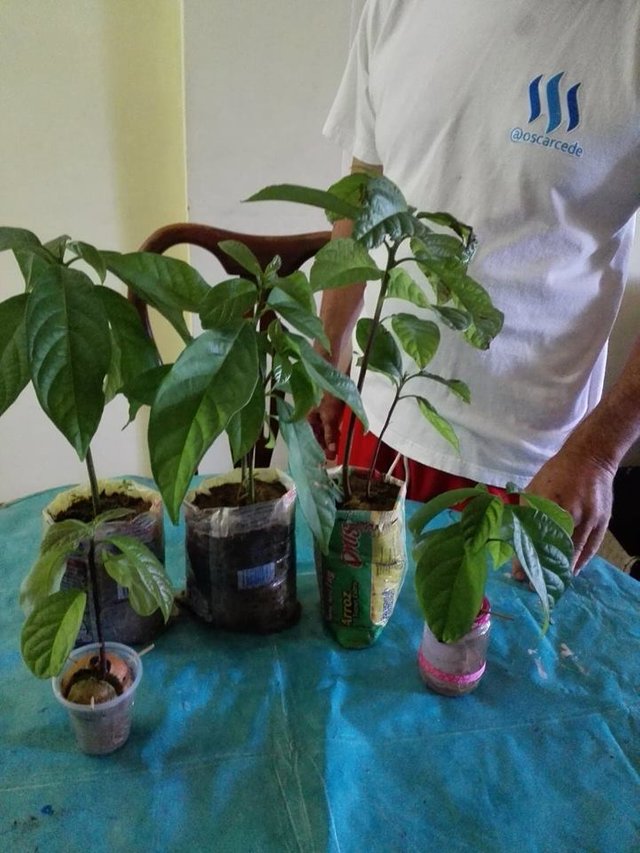
In my first publications, I explained the method of: How to germinate the seeds of avocados ?, I explained a simple method, which was to place the seed in a plastic cup full of water and also insert three chopsticks to hold the seed.
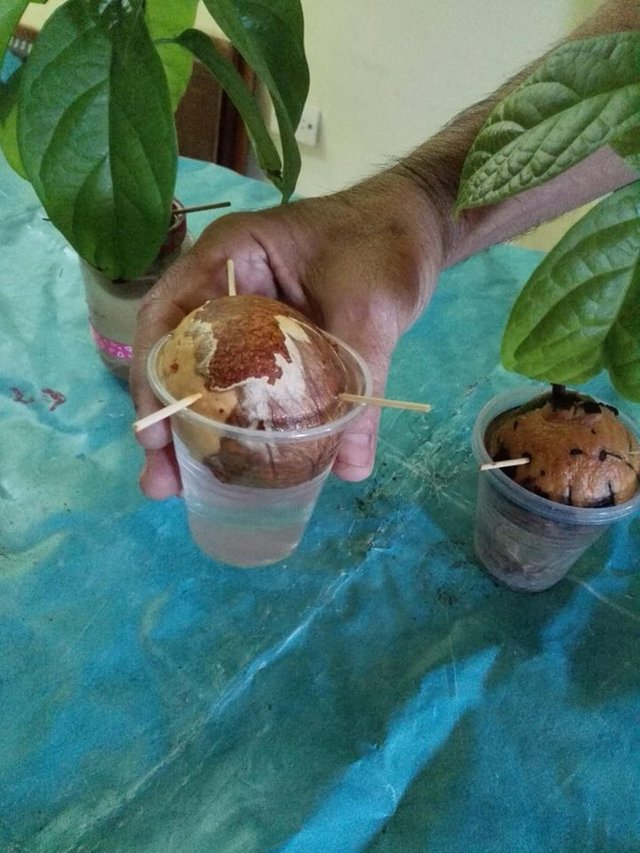
This has been a very efficient method, the seed usually germinates between 25 and 28 days; I also showed them an experiment that I did, where I placed a glass with the seed inside a plastic bag full of air and another glass with seed, but without the air bag. The result obtained was: that the seed that was placed inside the bag with air germinated at 20 days, while the other seed germinated at 28 days. My previous publication
Seeds A and B germinated inside a bag full of air:
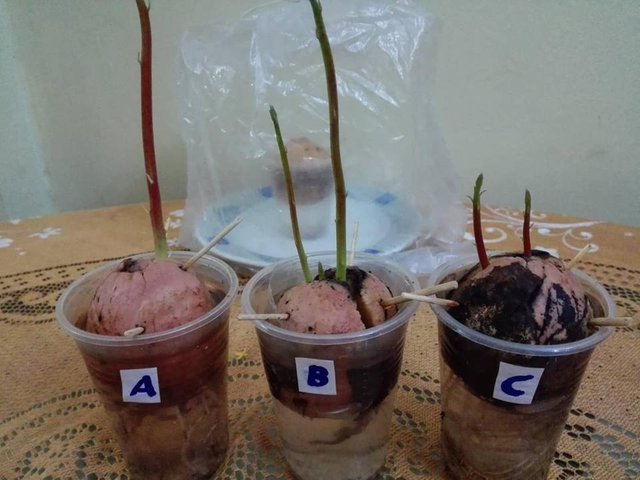
First transplant in plastic bags (40 days ago)
This was the first transplant of my seedlings, which I passed from the germination cups to the plastic bags, I told them at the time, that they are placed in plastic bags that are sold in agricultural stores, but we can also take advantage of the bags that we are left with the packaging of rice, sugar, etc. and in this way we are giving use to those disposable materials. My previous publication
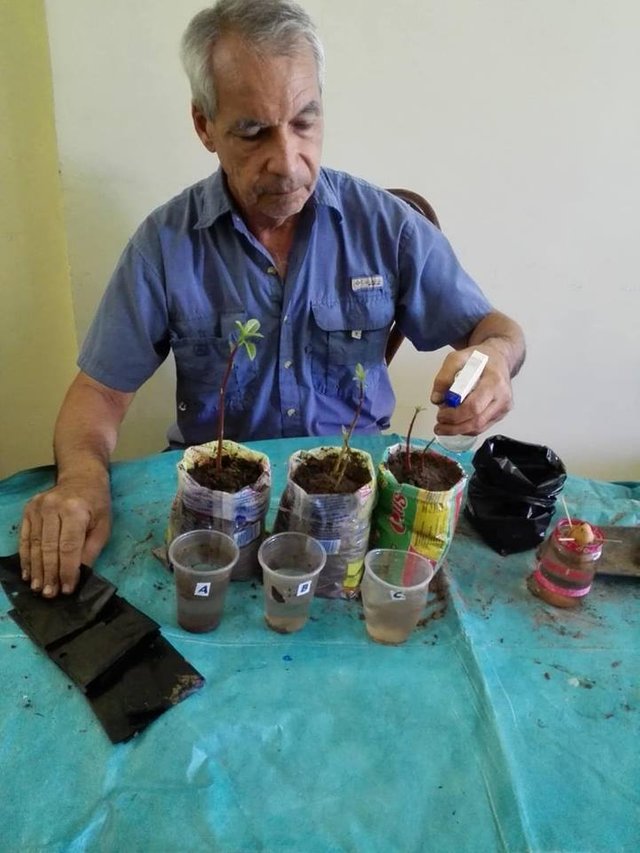
The development of my avocado plants, after the first transplant in plastic bags
How they could see in the first image, the three plants look vigorous, all have reached a height between 30 and 35 cm, considering them suitable for transplantation directly to the ground.
Care of avocado seedlings in plastic bags
Water the seedlings in the morning and in the afternoon.
Apply biofertilizer by foliar application.
Fumigate the seedlings with insecticides of natural origin, to repel pests. (Neem-based insecticide).
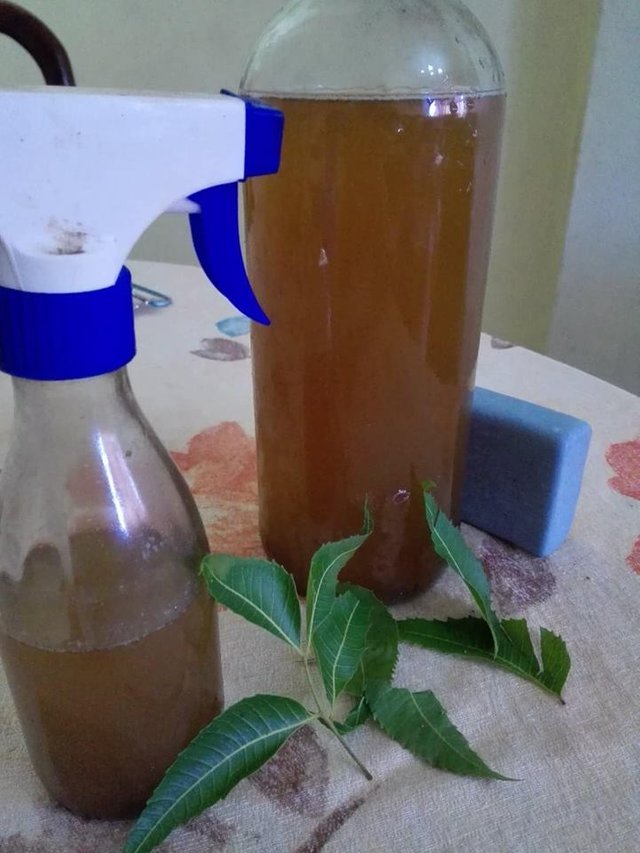
Seedlings should be placed in a place with sufficient sunlight.
As I said at the beginning, and as you can see in the images, my plants reached the optimum height to be transplanted, so tomorrow I will take them to the field and then I will show you the images about this process. For now I am just going to explain some requirements that must be taken into account at the time of the transplant.
The transplant of avocado plants
The transplant of the plants is very simple, if we are going to plant one or more plants, it is necessary to have a minimum area of 36 m2 per plant, this is usually when we plant them in the gardens or patios of our gardens. house, but when it comes to open field plantations, a wider sowing frame is recommended, the plants are placed in rows to facilitate irrigation, with a separation of 8 meters between them, if there is more than one row, there will also be a separation of 8 m between rows and rows. Many farmers place the plants in a triangular shape.
Steps for the transplant:
Locate the area, preferably with good drainage and rich in organic matter.
Between each plant there should be a separation between 8 and 10 meters.
Open a hole 30 centimeters wide by 40 centimeters deep.
Add livestock manure and a substrate with earthworm humus at the bottom of the hole.
Add fungicides based on copper to the bottom of the hole.
Wet the soil before and after the transplant.
Care of avocado plants
Once we have transplanted our plants, we must maintain the daily irrigations, it is important to keep the soil moist, especially in these first days after the transplant, until the plant adapts to the new environment.
Apply foliar fertilizers with the complete formula N-P-K and with microelements. These fumigations should be done weekly, fungicides can also be incorporated into the fumigation.
Apply granulated fertilizers of the N-P-K formula. This type of fertilizer is recommended to apply every 30 days, placing around the plant at a distance of 40 cm. As for the amount of this fertilizer, it is considered sufficient to start with two handfuls per plant, and then we can increase the dose as the plant grows, but we must always be cautious with the use of nitrogenous fertilizers, in An upcoming publication I will explain about the handling of nitrogenous fertilizers.
References: This publication is original content and with its own images.
Thanks for sharing this post with @farms indeed we @farms has learnt from this publication and finds it of great importance to this community.
Resteem
I like the processes of your germination to transplanting stage. This is very amazing to have such a nice modification of plant breeding, especially on fruits which provide numerous vitamins. Thank you for this nice post.